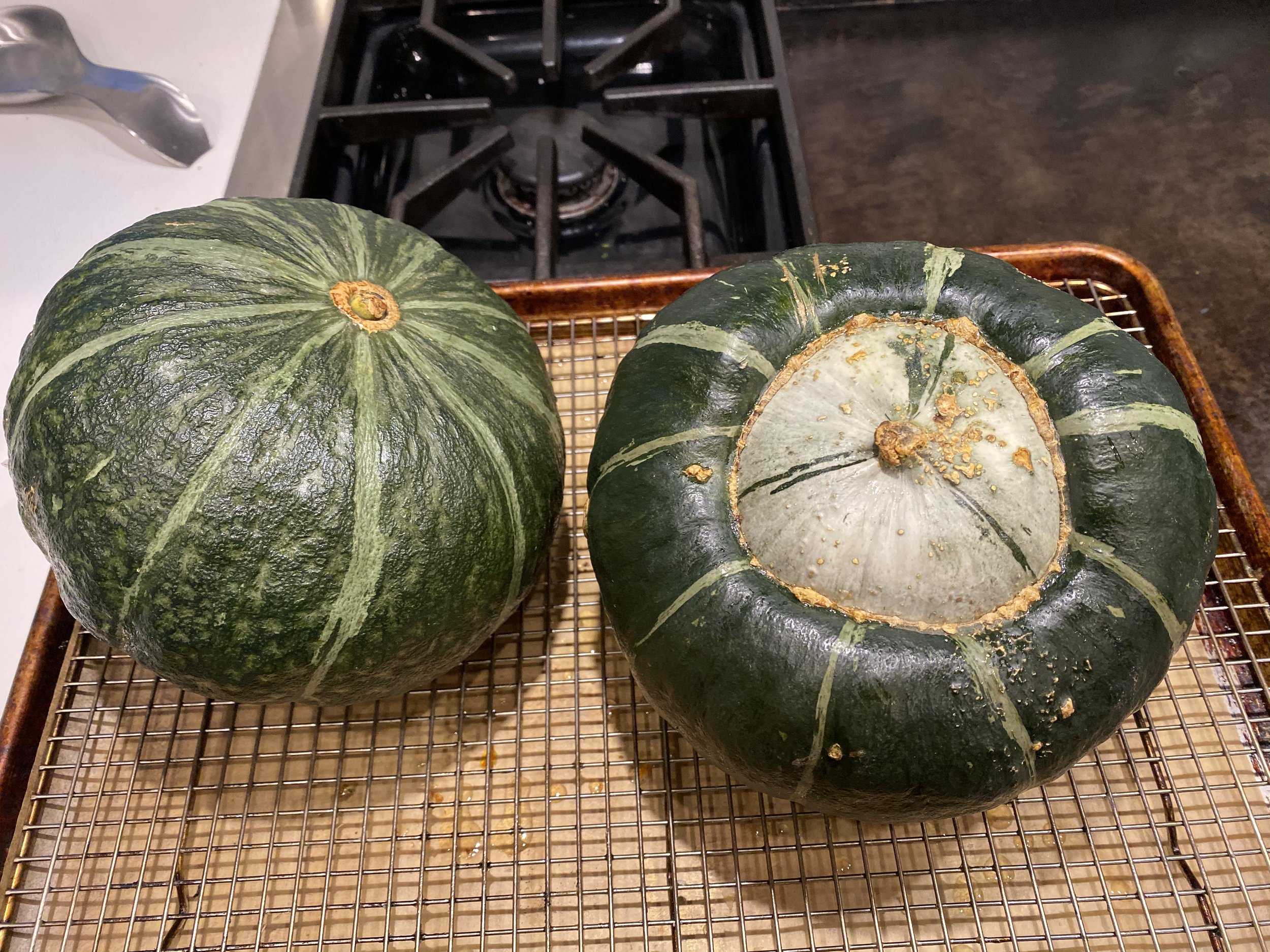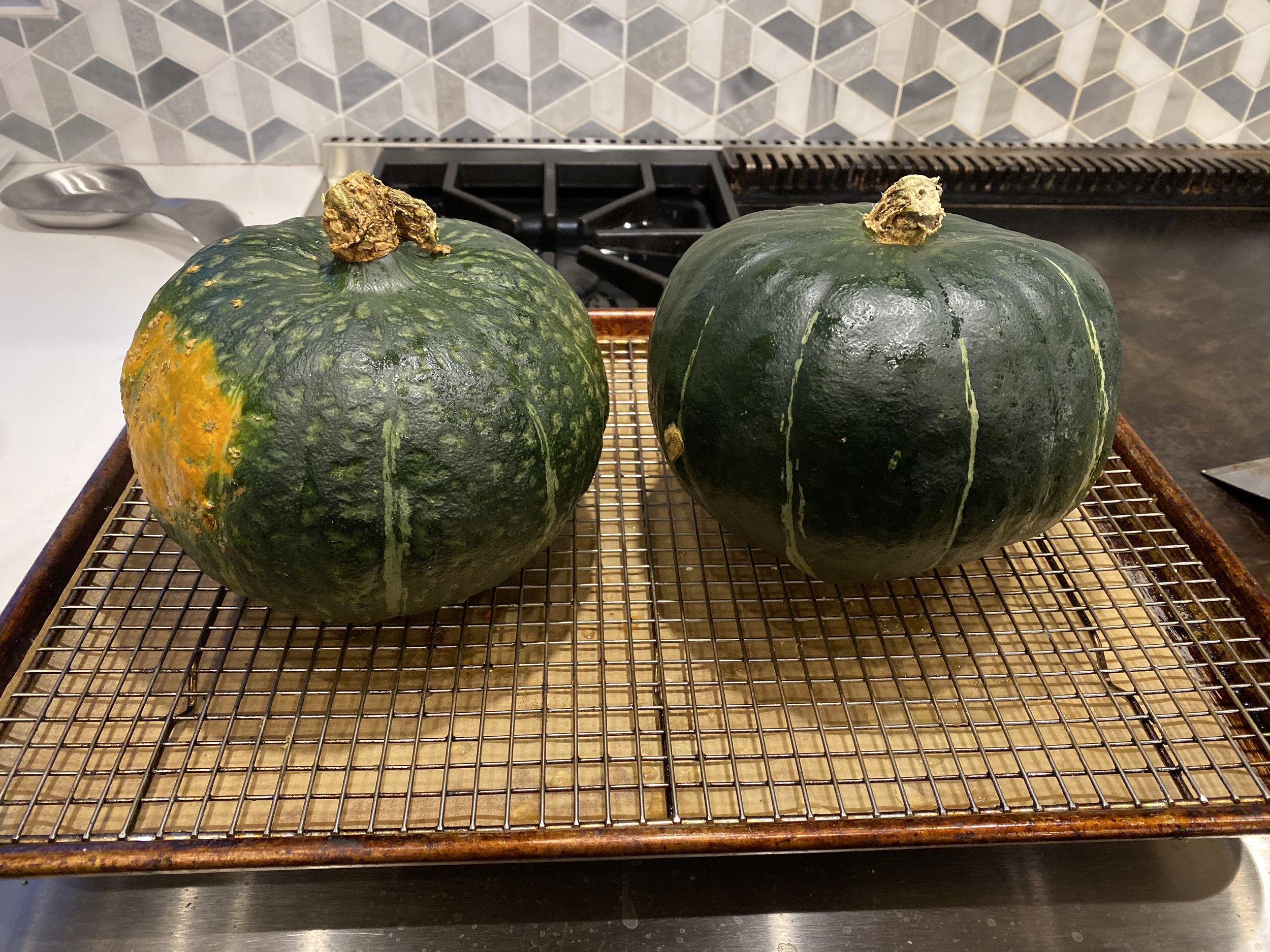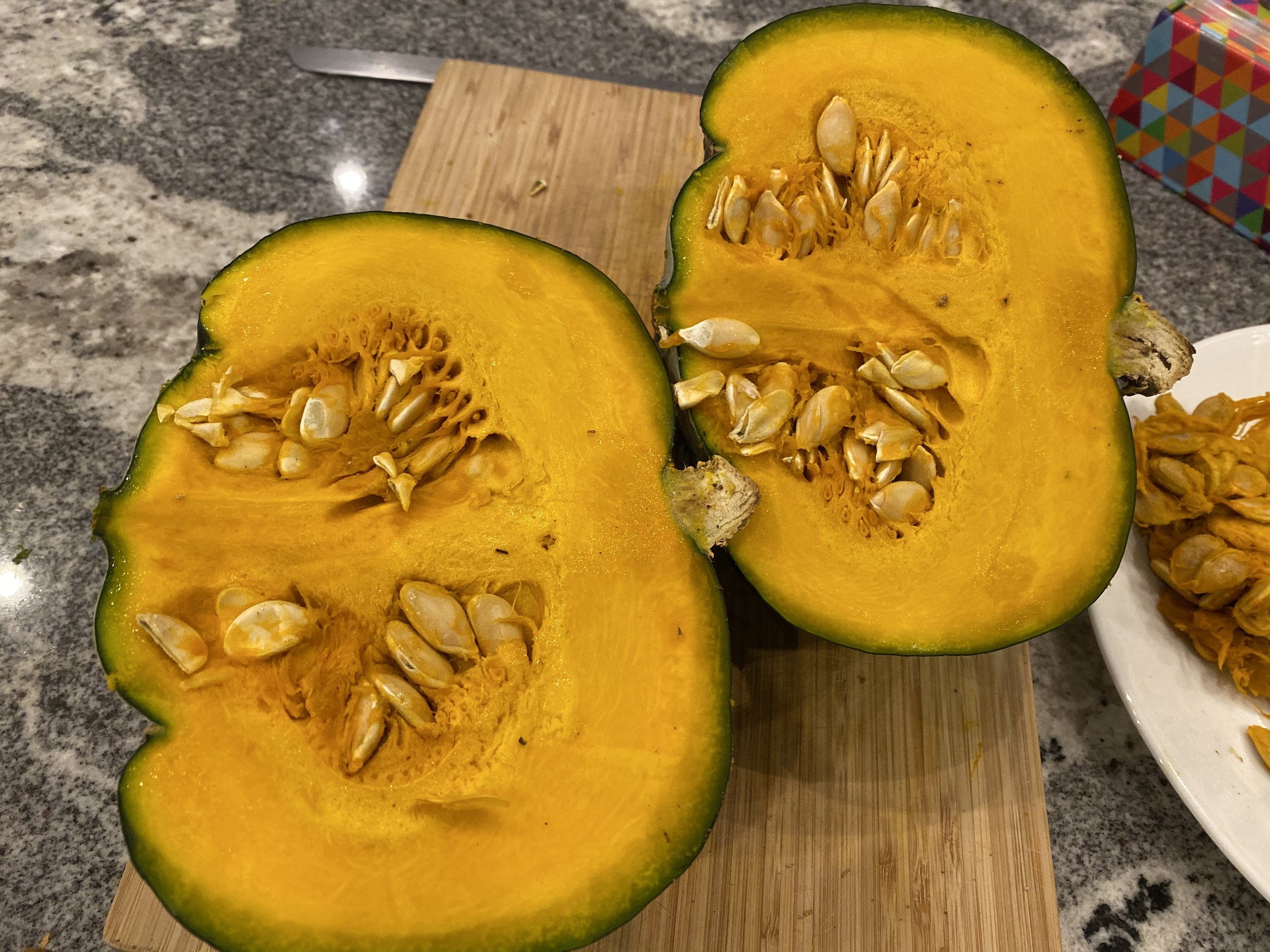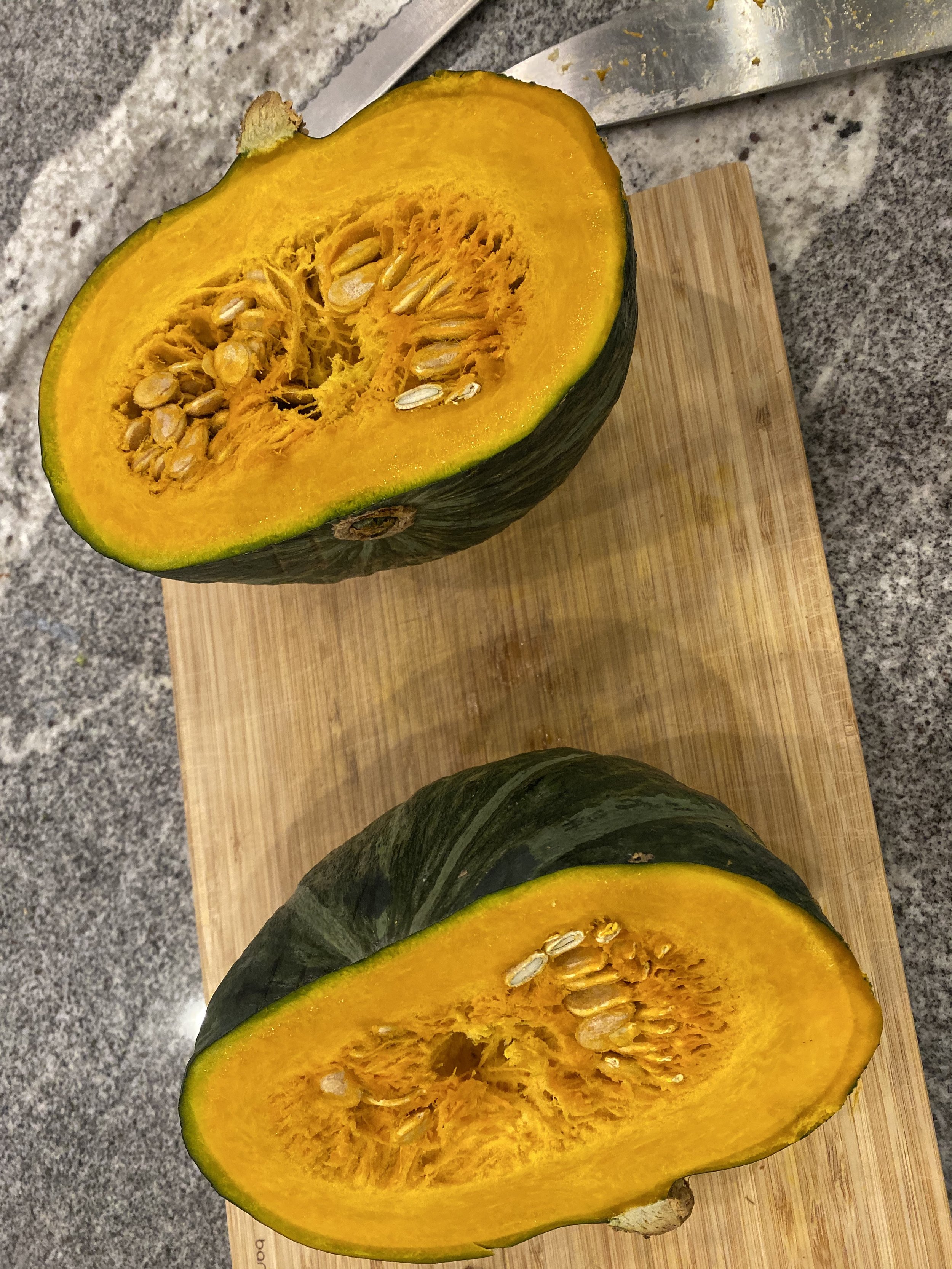Kabocha vs. Buttercup
Squash season is in full swing. The shelves usually limited to bland butternut and unispiring acorn varieties are now bursting with a varied and colorful bounty. I typically ignored these generally unattractive gourds until the past year or two, when I discovered the unique taste of the kabocha. Dense, flavorful, and almost potato-like in texture, it is a far cry from the mushy and stringy butternut that I typically associated with squash.But not all kabocha are the same. In prime season (now), it's considerably easier to find the large, heavy kabocha that are brimming with a modest sweetness, chestnut-like flavor, and dry, dense composition. Out of season, kabocha can occasionally develop a wetter texture with a mushy texture more reminiscent of the pedestrian varieties that contaminate the squash section year round. The challenge that it's often difficult to identify whether a kabocha will be fantastic or uninspired. Heavier squashes seem to be superior, and I typically find that rougher skin and larger skin seem to be predictive of the better versions. I typically roast my squash by cooking it at 400 °F for 20 minutes, then halving it, scooping the seeds out, and cutting into thick slices. These thick slices are then roasted for 40 more minutes. I don't find that oil is necessary, though some may prefer the flavor. The first cut through the squash can offer clues as to what is to come. A green ring around the inside is typically an ominous sign, as are beads of liquid that appear after slicing. Sometimes extending the second roast up to one hour can help, as can resting the cooked squash overnight in the refrigerator, but it will never near the flavor and texture of an optimal squash.Adding to these challenge is that kabocha has a close relative, the buttercup, which more often takes on this softer texture. I also find the flavor tends to be more vegetal. The classic buttercup looks somewhat different from kabocha. They are squatter with a boxier shape compared with the rounder kabocha. The base has an open ring with a pale, thin skin in the center, and the surface is geenrally smoother. The flesh tends to be a brighter yellow vs. the more orange hue of the kabocha.
 While these classic descriptions seem like an easy way to differentiate these two varieites, the reality is that there is a spectrum in this family that makes distinguishing these two archetypes more challenging. Some kabocha-looking squash have a somewhat open ring at the base instead of the classic "button". There are variations skin texture and shape in both varieites, and it's not surprising they are often confused and mislableled. Some websites claim that anything but a pure closed button base identifies the squash as a buttercup, but I find it's not so simple. There is considerable variety in these forms, which I suspect reflects the fact that there are not only two varieites, but a range that may be closer or further from the classic buttercup or kabocha.I bought two squash at the same supermarket. One was clearly a buttercup, with the classic open base and squared off shape. The interior is asymmetric, with the seed-packed core much closer to the base than the more centered kabocha. The texture upon roasting was softer, with a sweet, but more vegetal taste that was a bit unappealing.
While these classic descriptions seem like an easy way to differentiate these two varieites, the reality is that there is a spectrum in this family that makes distinguishing these two archetypes more challenging. Some kabocha-looking squash have a somewhat open ring at the base instead of the classic "button". There are variations skin texture and shape in both varieites, and it's not surprising they are often confused and mislableled. Some websites claim that anything but a pure closed button base identifies the squash as a buttercup, but I find it's not so simple. There is considerable variety in these forms, which I suspect reflects the fact that there are not only two varieites, but a range that may be closer or further from the classic buttercup or kabocha.I bought two squash at the same supermarket. One was clearly a buttercup, with the classic open base and squared off shape. The interior is asymmetric, with the seed-packed core much closer to the base than the more centered kabocha. The texture upon roasting was softer, with a sweet, but more vegetal taste that was a bit unappealing.
 The kabocha, despite the slight ring around the button, was clearly a kabocha in prime form. The darker color, denser texture, and chestnut-like sweet flavor was a refreshing contrast.
The kabocha, despite the slight ring around the button, was clearly a kabocha in prime form. The darker color, denser texture, and chestnut-like sweet flavor was a refreshing contrast.
